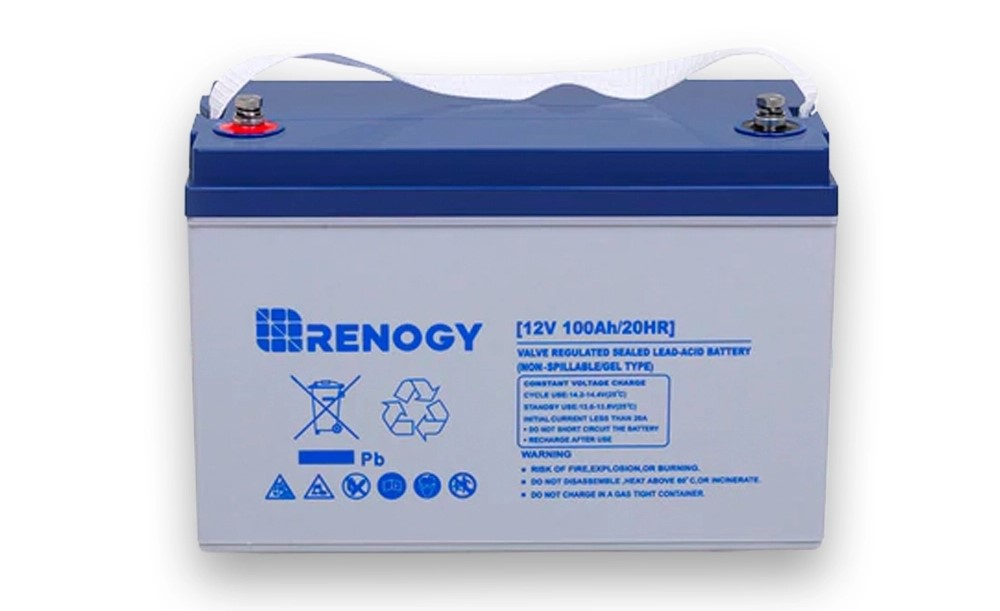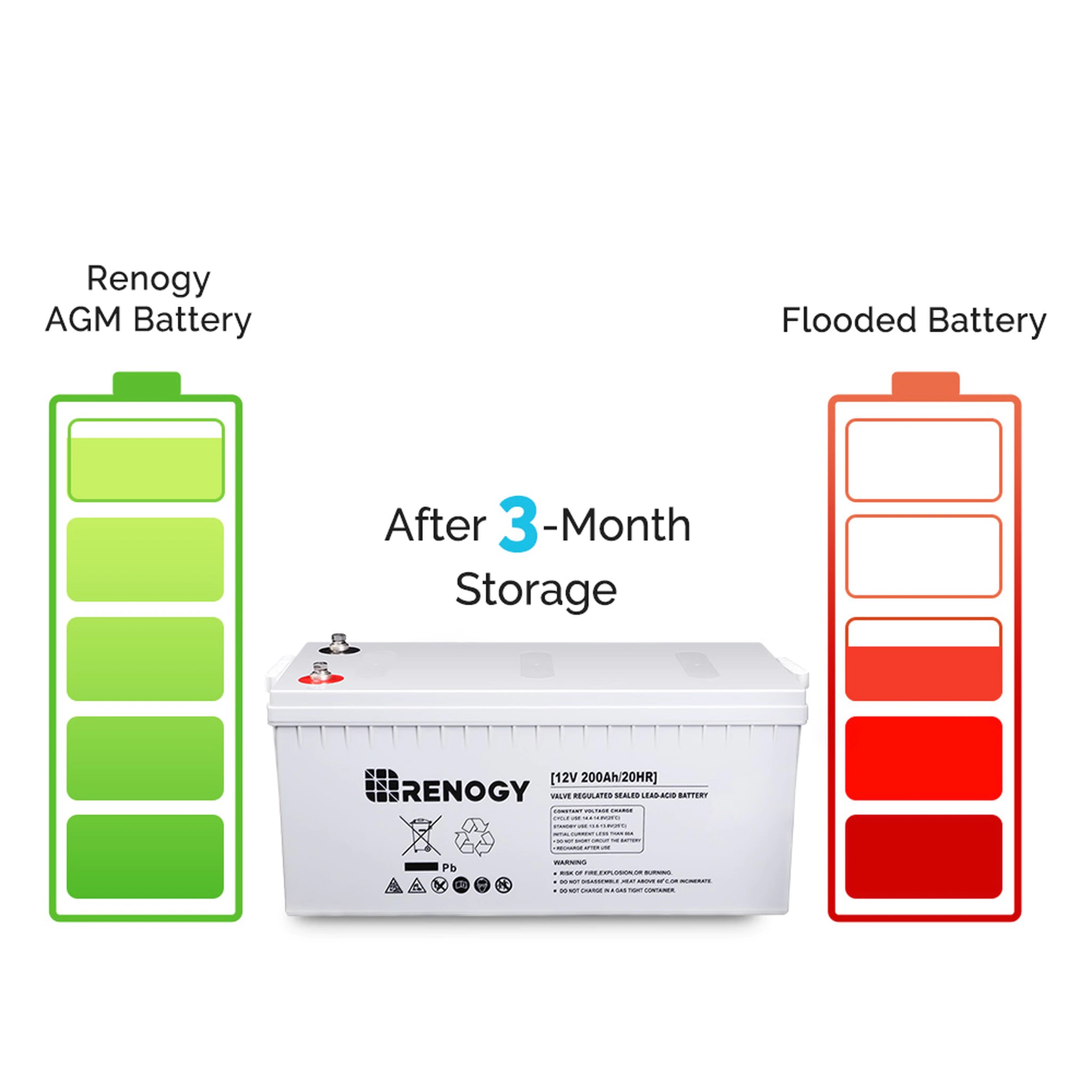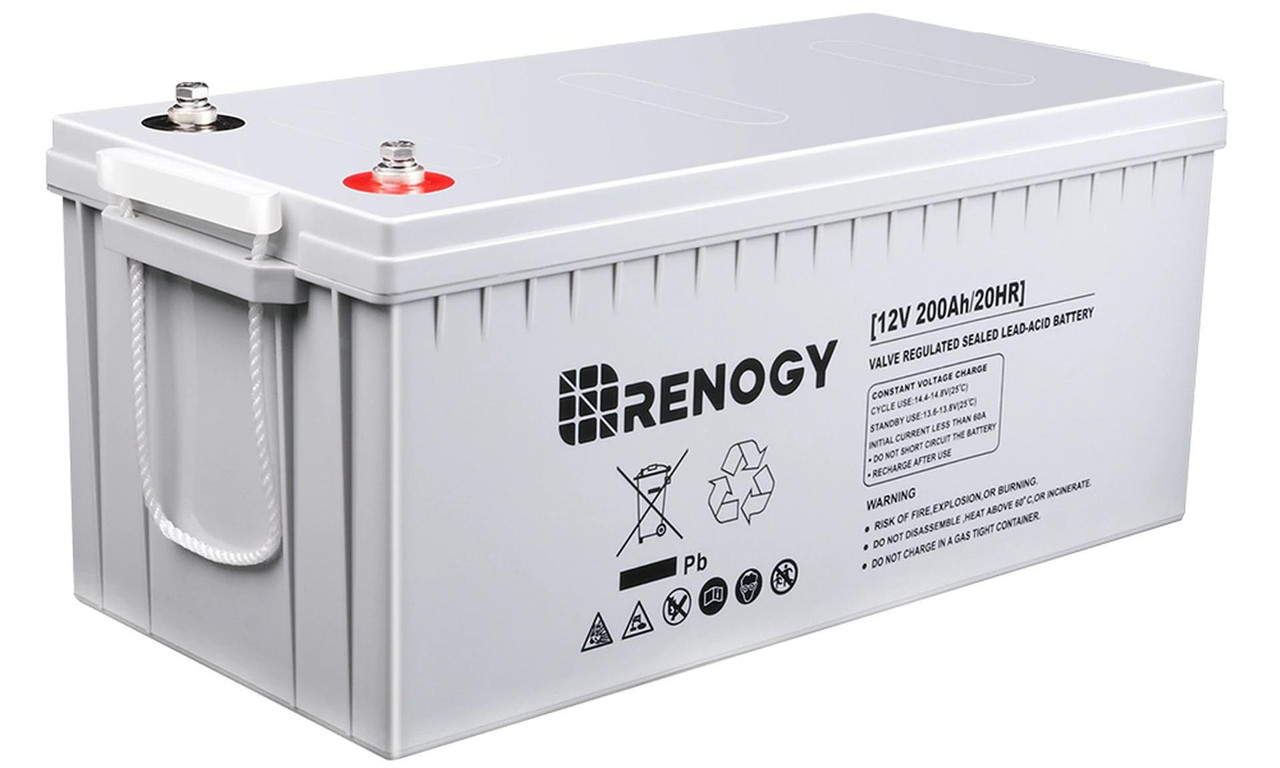What to Know about Absorbed Glass Mat Batteries
When it comes to thinking about deep cycle batteries, many people often envision typical flooded lead acid batteries available at most big box stores. Flooded lead acid batteries are definitely the most inexpensive option and are widely available. However, because they are somewhat high maintenance and not very efficient, many opt for sealed lead acid or lithium iron phosphate batteries for their solar installations. Sealed lead acid batteries, which include gel and absorbed glass mat batteries, store 10 to 15 percent more energy than lead acid batteries and charge up to four times faster. Let's talk about absorbed glass mat batteries, what their advantages are, and if they're the right battery for you.
What are deep cycle batteries?
Deep cycle batteries look similar to car batteries, but are actually very different. In contrast to car batteries which only provide short bursts of energy, deep cycle batteries are designed to provide sustained energy over a longer period of time making them perfect for solar applications.
What should I consider when deciding on a battery for my solar panels?
When shopping for batteries for your solar installation, there's some different factors to consider: price, capacity, voltage, and cycle life.
Price: Be sure to consider the ultimate lifetime and not just upfront costs, as you will have to replace lead acid batteries before you will need to replace a lithium iron battery. You’ll also need to do more maintenance on a flooded lead acid battery, and time means money.
Capacity: Battery capacity is important because it measures the amount of energy you can store. If you need to power certain appliances for long periods of time, you'll need more batteries to carry a bigger load. Capacity is measured in total amp hours.
Voltage: Be sure to check the voltage of the battery bank to ensure it is compatible with your panels and the rest of the system, particularly your solar panels. Panels typically come in either 12V and 24V options. Most RV's and boats typically use 12V battery banks, so people usually stick with the 12V panels.
Cycle Life: This specifies the number of discharge and charge cycles a battery can provide before the capacity drops below the rated capacity. This varies sharply from technology to technology and is measured in the number of cycles.
What are flooded lead acid batteries?
Flooded lead acid batteries contain a combination of an liquid electrolyte. The liquid in these batteries must be carefully measured and maintained in order for the battery to perform properly and live up to its advertised shelf life.

What are sealed lead acid batteries?
Sealed lead acid batteries look similar to the flooded version, but there is no access to the inside compartment. So you do not have to add water to top it off.
Contrary to flooded lead acid batteries, sealed lead acid batteries require little to no maintenance and are spill-proof. They are more expensive than flooded lead acid batteries, but also have a much longer cycle life. Within the family of sealed lead acid batteries are two types: absorbed glass mat (AGM) and gel batteries.
Gel batteries, which use silica to stiffen the electrolyte solution in the battery, tend to have lower charger rates and output than absorbed glass mat batteries. They also can’t handle as much current, meaning they take longer to recharge. However, gel batteries have a greater lifespan than AGM batteries and can be mounted in any orientation. Absorbed glass mat batteries offer a better temperature range and are a bit cheaper than gel batteries.
What is an absorbed glass mat battery?
What is an AGM battery? Absorbed glass mat batteries contain a special glass mat separator that wicks an electrolyte solution between battery plates. As the battery operates, the electrolyte is transferred from the glass mat to the battery plates. The mat contains enough electrolyte for the battery to deliver its full capacity and if the battery is tipped over, the electrolyte will not spill.
What are the advantages of absorbed glass mat battery?
The main advantages of absorbed glass mat battery are they are lower maintenance than flooded lead acid batteries, charge up to five times faster, have a long shelf life, and offer a depth-of-discharge of 80 percent (flooded batteries typically have a 50% DoD).
Which is better, absorbed glass mat or gel batteries?
As mentioned earlier, there are two types of sealed lead acid batteries: AGM and gel batteries. Gel batteries tend to lose power faster than AGM batteries, especially at lower temperatures. AGM batteries work in extreme weather, so if you live in cold temperatures AGM batteries are a great option.
On the other hand, gel batteries make use of the acid better than AGM batteries and they have better depth of discharge. AGM batteries are comparably cheaper than gel batteries, but they present a longer life span and offer bigger bursts of amps.
Are absorbed glass mat battery right for me?
We'd recommend investing in an absorbed glass mat battery for your solar installation if:
You need something that's low maintenance. In contrast to flooded lead acid batteries which require monitoring water levels, sealed lead acid batteries require little maintenance.
You have a moderate budget. Sealed lead acid batteries cost $239-$449, while lithium iron phosphate batteries cost $499-$1499. If you're on a budget, but still looking for something a step up from flooded lead acid batteries, sealed lead acid batteries are the way to go.
Your battery will have to withstand extreme temperatures. Absorbed glass mat batteries are superior to gel batteries in that they are not as affected in cold temperatures.

How long does an AGM battery last?
Battery life varies a bit from technology to technology. For example, many gel batteries typically last 1,100 cycles, absorbed glass batteries 600 cycles, and lithium iron phosphate batteries 7,000 cycles. Typically, AGM batteries can last two to three times as long as a flooded lead acid battery battery. If a flooded battery lasts three to five years, an AGM battery could last six to ten years or more.
Do AGM batteries need a special charger?
No. AGM batteries do not need a special charger. However, like any other high quality battery, it will benefit from a high quality charger.
Can I wire different battery types and sizes together?
We recommend wiring batteries of the same type and amp hour rating, i.e. if you go with absorbed glass matt batteries, all the batteries in your battery bank should be AGM batteries. This will limit any efficiency loss due to having different batteries.
How many batteries will I need?
The amount of battery storage you need is based on your energy usage. Energy usage is measured in kilowatt hours. For example, if you need 1,000 watts for 8 hours per day, then your energy usage is 8kWh per day. A battery capacity of 4 to 8 kWh is usually sufficient for an average four-person home.
To size a system that will best fit your needs, we recommend making a list of all the devices you plan on running. Get the wattage information, or the amps and volts of the product, and provide an average run time per device. The Renogy Solar Panel Calculator is a great tool that makes it a quick and easy process to help determine your specific needs.
Conclusion
Absorbed glass mat batteries are a great option if you have a moderate budget, are looking for something that's lower maintenance, and charge up to five times faster than flooded lead acid batteries. Add the fact they have a long shelf life, and you have a great battery option for your solar installation.








